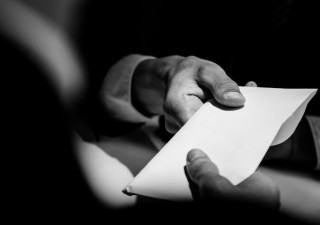Maintainability and sustainability of patent revocation actions in India
31 March 2025

IP litigations often pose nuances of patent law. Whether a revocation petition is maintainable if the petitioner has taken a defence of invalidity of the suit patent in an infringement suit filed by the patentee. Whether an already filed revocation petition can be sustained after the expiry of the term of the patent. These two intriguing questions of law have been resolved by the Delhi High Court in Macleods Pharmaceuticals v Controller of Patents & Anr. by answering both issues in the affirmative. After a detailed survey of the provisions of the Indian Patents Act, the court concluded that the scope of a revocation petition under Section 64 is completely different from the defence of invalidity under Section 107.
Macleods Pharma (the petitioner) filed a revocation petition seeking revocation of a patent of Boehringer Pharma (the respondent) which covered an anti-diabetic product. Just two days later, the respondent filed an infringement suit against the petitioner before the Himachal Pradesh High Court (the Himachal suit). After the expiry of the patent, the respondent moved applications before the court for dismissal of the revocation petition by submitting that there is no difference between a finding of invalidity in a revocation petition or an infringement suit and a defence of invalidity taken by the petitioner in its written statement in the Himachal suit is similar to its revocation petition. The respondent also claimed that the revocation petition became infructuous as the patent had expired. The petitioner refuted the respondent’s averments and stressed upon the difference between prayers made in two proceedings.
On the maintainability issue, the court compared the fine distinction across the revocation petition, infringement suit and counter-claim for revocation. Whereas a revocation petition can be entertained only by a high court, a patent infringement suit can be adjudicated by a district court as well. However, where a counter-claim seeking revocation of the patent is filed in an infringement suit by the defendant, the suit, along with the counter-claim, has to be transferred to the high court for trial. The court highlighted the stark difference as to the effect and consequence of a revocation petition and an infringement suit. In case the revocation petition is allowed, the patent is effaced from the register of patents as if it never existed. On the contrary, a court’s finding of invalidity in an infringement suit by itself would not result in the removal of the patent from the register and the defendant has a right to take additional steps for rectification of the register.
The court further clarified that a finding of invalidity in a patent infringement suit operates as a finding in personam, which only binds the contesting parties, and it would not have a direct bearing against third parties. Even when certain claims are held invalid in a patent infringement suit, a competent court may grant relief in respect of any valid claims which are infringed. In contrast, a finding of revocation by a high court in a revocation petition operates in rem, and the patentee would not be able to assert the suit patent or claims against any third party. The court also noted that although the petitioner has taken the defences of invalidity in the later-filed Himachal suit, it has not filed a counter-claim for revocation of the patent in the suit. Hence, the court held the petitioner had an independent, stand-alone right to file a revocation petition, and the same is maintainable.
On the sustainability issue, the court observed that the respondent’s Himachal suit claiming damages was filed during the life of the suit patent and is still continuing despite the term of the patent having lapsed. The Himachal suit has not become infructuous just because the patent has expired, as the cause of action still survives insofar as damages are concerned. Applying the same rationale, the court ruled that a revocation petition can be filed or sustained even after the lapse of patent life. The court explained that if the petitioner succeeds in getting the patent revoked, the Himachal suit would be liable to be dismissed. This was held to be a valid cause of action by the court in favour of the petitioner to pursue its revocation petition.
In sum, the court’s judgment elucidates that the filing of a revocation petition and defence of invalidity in an infringement suit can co-exist independently. The revocation petition would be sustained even after the expiry of the patent, provided a cause of action thereto survives.









